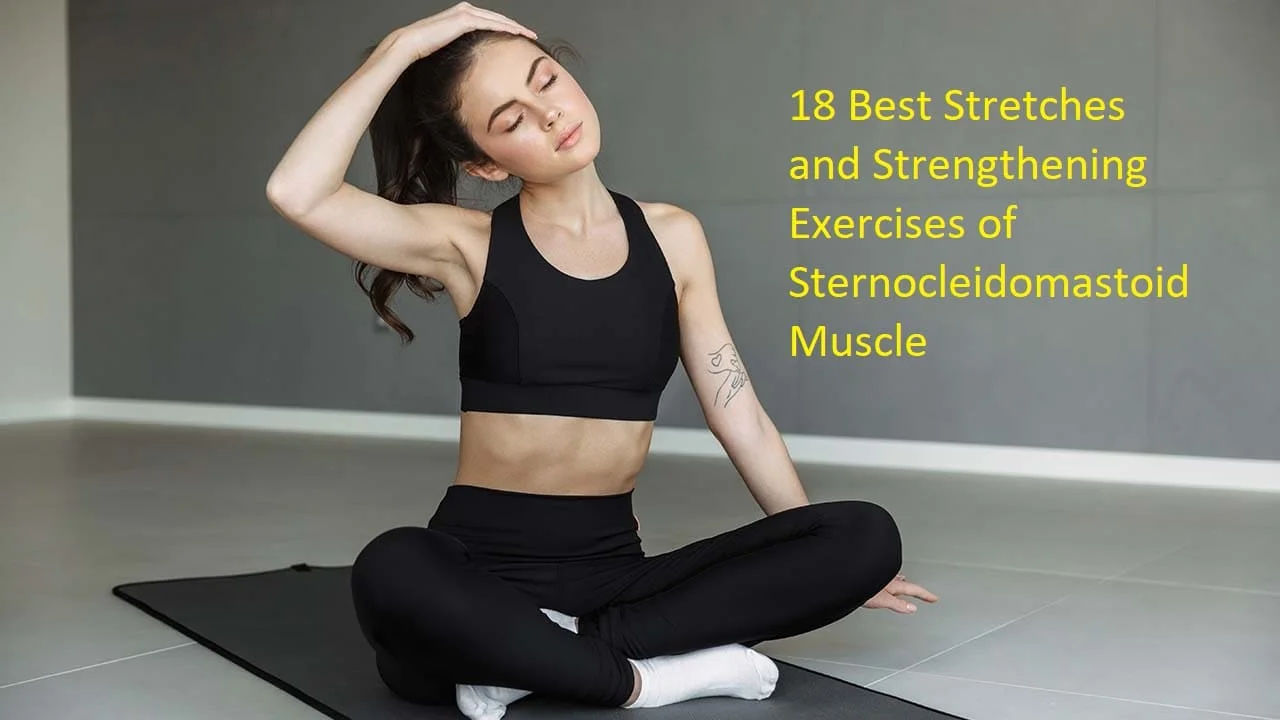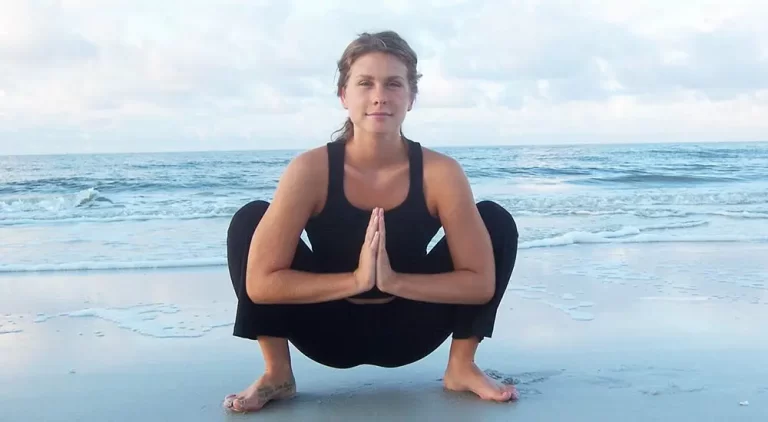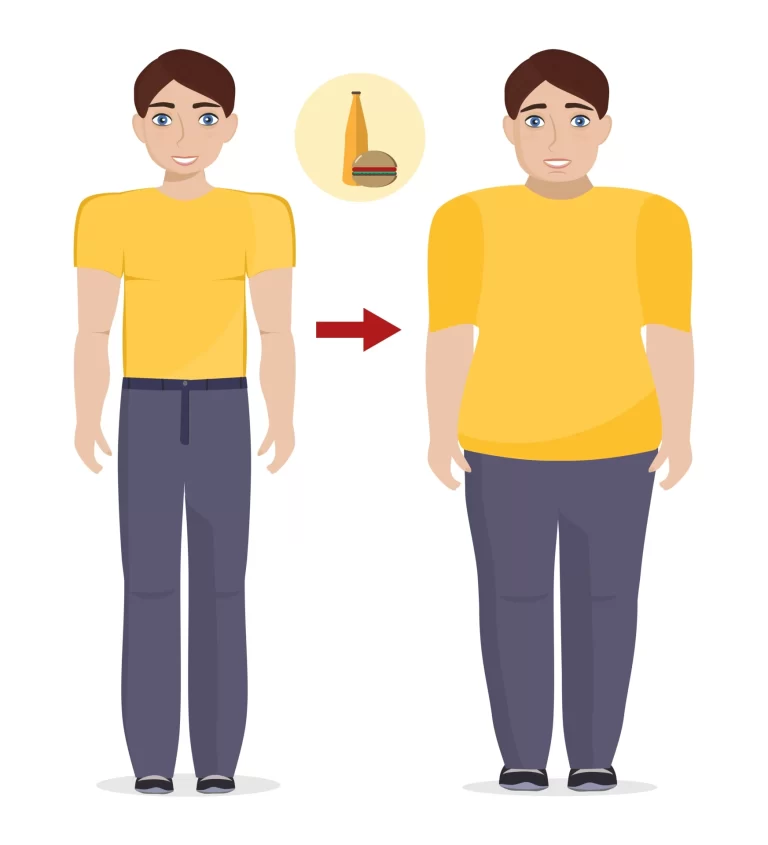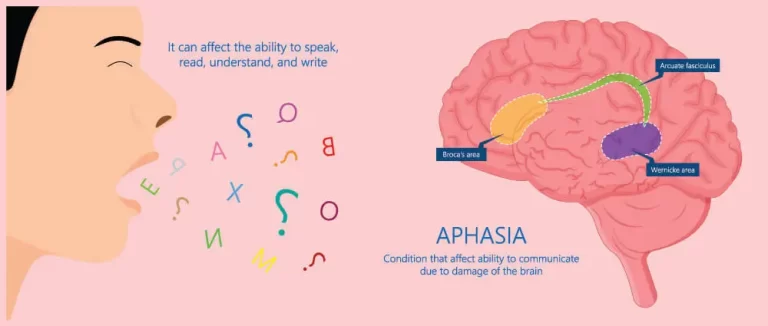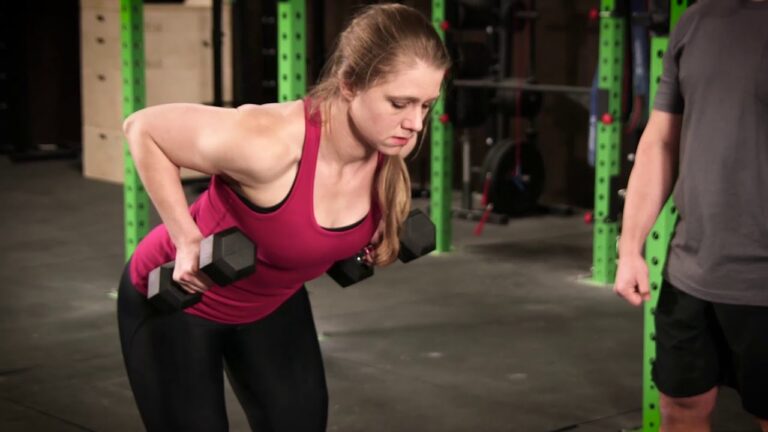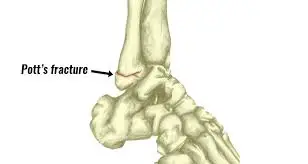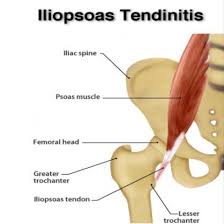18 Best Stretches and Strengthening Exercises of Sternocleidomastoid Muscle
Introduction
Often overlooked in fitness routines, the neck muscles play a crucial role in supporting the head’s weight, maintaining proper posture, and enabling a wide range of movements. Among these muscles, the sternocleidomastoid (SCM) stands out, extending from behind the ears to the collarbone and sternum. Strengthening and stretching the SCM not only enhances neck stability and flexibility but also alleviates pain, improves posture, and reduces the risk of injuries.
This comprehensive guide delves into the world of SCM exercises, providing a detailed understanding of their benefits and offering a step-by-step guide to performing them effectively. Whether you’re a seasoned athlete seeking to optimize performance or an individual seeking to alleviate neck pain and improve posture, this guide has something for everyone.
What is Sternoclaidomastoid ?
The sternocleidomastoid muscle is a long, thin muscle that extends from the base of the skull to the sternum and clavicle. It is located on the front of the neck and is easily visible when the head is turned to one side.
The muscle is named after its origin and insertion points. The sternocleidomastoid muscle originates from the sternum (sterno) and clavicle (cleido) and is inserted into the mastoid process of the temporal bone in the skull.
The sternocleidomastoid muscle is responsible for several actions in the neck and head. When both sides of the muscle contract together, they help in the flexing of the neck forward. When only one side contracts, it turns the head to the opposite side and leans the head to the same side.
The sternocleidomastoid muscle plays an important role in maintaining posture and stabilizing the head during movement. It is also involved in breathing, as it lifts the sternum and ribcage during inhalation.
Injuries to the sternocleidomastoid muscle can occur from trauma or overuse, leading to pain, stiffness, and limited range of motion in the neck. Physical therapy and stretching exercises can help in alleviating these symptoms.
Exercise for sternocleidomastoid
There are two types of exercise for sternocleidomastoid muscle
- Strengthening exercise of sternocleidomastoid
- Stretching exercise of the sternocleidomastoid
Strengthening exercise of sternocleidomastoid
Chin tuck
Chin tuck is an exercise that can help stretch and strengthen the sternocleidomastoid muscle. To do a chin tuck, you should follow these steps:

- Start with lying on your back, tuck your chin in the direction of your chest, and assume an axis through your ears.
- Make sure you avoid the use of the sternocleidomastoid muscle on the side of the neck.
- Maintain the tuck for 5 seconds.
- Do this exercise for 10 repetitions.
- For better results, you should do 3 sets of this exercise.
The chin tuck exercise can be modified by adding resistance, such as using your hand to gently push down on your forehead while performing the movement. This can increase the strength and endurance of the sternocleidomastoid muscle.
Neck Rolls
Neck rolls are another exercise that can help stretch and strengthen the sternocleidomastoid (SCM) muscle. To perform neck rolls, follow these steps:

- Start with sitting or standing up straight and your shoulders should be relaxed and back.
- After that, gradually roll your head in a rotatory motion in one direction several times before repeating it in another direction.
- Ensure to keep your shoulders relaxed while you perform this so as not to strain any muscles in your neck.
- As you move during the circle, focus on activating various parts of the SCM muscle group until you have worked every inch of it.
- You will know you are done when there is no tension left behind in the area.
- Slowly roll your head back to the starting position and repeat the exercise for 10-15 repetitions.
With daily practice, these stretches can even improve posture and reduce stress levels. To modify neck rolls, you can add resistance by placing your hand on the side of your head and gently pushing down while performing the movement. This can increase the strength and endurance of the SCM muscle.
Head Tilts
Head tilts are another exercise that can help stretch and strengthen the sternocleidomastoid (SCM) muscle. This exercise involves tilting your head to the side, which stretches the SCM muscle on the opposite side of your neck. Here is how to perform head tilts:
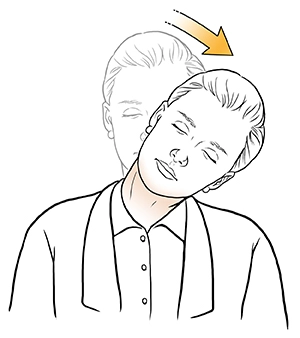
- To perform this exercise, start with standing or sitting in an upright position and your spine should be straight.
- After that gradually lean your head to the left side until you experience mild tension along the right side of your neck before changing sides.
- Slowly return your head to the starting position and repeat the exercise on the opposite side by tilting your head to the left, bringing your ear towards your left shoulder.
- Hold the position for 5-10 seconds, feeling a stretch on the right side of your neck.
- Maintain each position for 10-15 seconds and do it again up to four times on each side depending on your comfort level.
To modify head tilts, you can add resistance by placing your hand on the side of your head and gently pushing down while performing the movement. This can increase the strength and endurance of the SCM muscle.
Neck Extension
Neck extension is an exercise that can help stretch and strengthen the sternocleidomastoid (SCM) muscle. This exercise involves extending your neck backward, which stretches the SCM muscle on the front of your neck. Here is how to perform neck extension:
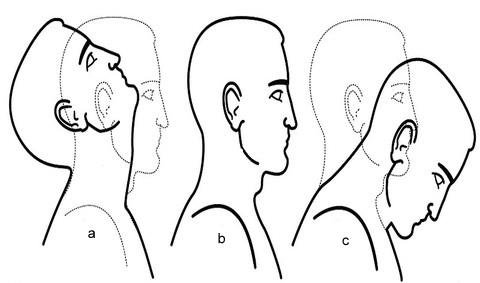
- Start with sitting up tall and keep your shoulders relaxed.
- Slowly lean your chin upward to make your face as parallel to the ceiling as possible.
- After that bring it gradually down towards your chest as you pull your shoulder blades closer behind you.
- Perform these exercises gradually for about 5-10 seconds before releasing and carefully returning to an upright position again.
- Remember to breathe during these movements and focus on maintaining good posture by avoiding any jerky or fast movement.
To modify neck extension, you can add resistance by placing your hand on your forehead and gently pushing forward while performing the movement. This can increase the strength and endurance of the SCM muscle.
Neck Flexion
Neck flexion is another exercise that can help stretch and strengthen the sternocleidomastoid (SCM) muscle. This exercise involves flexing your neck forward, which stretches the SCM muscle on the side of your neck. Here is how to perform neck flexion:
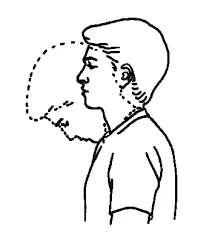
- Start with sitting or standing tall and your shoulders should be relaxed and your chin should be parallel to the ground.
- Gradually drop your head forward until you experience a gentle stretch along the back of your neck.
- Maintain for 20-30 seconds before gradually returning to the initiate position.
- Moreover, adding slight turning motions to each side as you lower into the stretch may give more relief from tightness throughout the area.
To modify neck flexion, you can add resistance by placing your hand on the back of your head and gently pushing down while performing the movement. This can increase the strength and endurance of the SCM muscle.
Revolved Triangle Exercise
The Revolved Triangle exercise is a yoga pose that can help stretch and strengthen the SCM muscle. Here is how to perform the Revolved Triangle exercise:
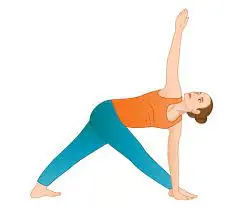
- Start with standing within about four feet of distance.
- Face the right toes forward and the left toes out at a slight angle.
- Square the hips and face forward in the same direction the right toes are pointing.
- Raise the arms up at the sides so they are parallel to the ground.
- Gradually hinge at the hips to fold forward, stopping when the torso is parallel to the ground.
- Take the left hand to the leg, the ground, or a block, wherever you can reach.
- Do the extension of the right arm straight up and the palm should be facing away from the body.
- Rotate the gaze to look up in the direction of the right thumb.
- Do exhalation to rotate the neck to look down at the ground.
- Inhale as you return the gaze upward.
- Keep the rest of the body stable and continue these neck rotations as you stay in the pose for up to one minute.
- Perform on the alternate side.
To modify the Revolved Triangle exercise, you can use a block or prop to support your hand if you cannot reach the floor. You can also bend your front knee slightly if you feel any discomfort in your lower back.
Upward Plank Exercise
The Upward Plank exercise, also known as Purvottanasana in yoga, is a pose that can help stretch and strengthen the SCM muscle. Here is how to perform the Upward Plank exercise:
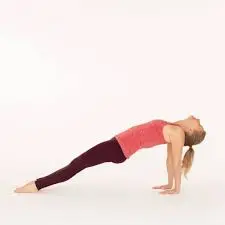
- This pose allows you to passively hang the head backward and downward, releasing tension in the neck and shoulders.
- This exercise lengthens and stretches the SCM, chest, and shoulder muscles.
- Ensure the back of the neck is fully relaxed in order to avoid compression of the spine.
- If it is uncomfortable for you to let the head hang back, you can tuck the chin into the chest and lengthen the back of the neck. Specific on engaging the neck muscles without straining.
- You can also permit the head to rest back on some type of support just as a chair, a wall, or stacked blocks.
- To perform this exercise you should come into a seated position and the legs should be straight in front of you.
- Press the palms to the surface alongside the hips.
- Lift the hips & and bring the feet under the knees.
- Deepen the pose by straightening the legs.
- Open the chest and allow the head to drop back.
- Hold for up to 30 seconds.
- Do this pose up to three times.
To modify the Upward Plank exercise, you can use a block or prop to support your hands if you cannot lift yourself up off the floor. You can also keep your knees bent if you feel any discomfort in your lower back.
Prone Cobra Exercise
The Prone Cobra exercise is a simple yet effective stretch that can help lengthen and strengthen the SCM muscle. Here is how to perform the Prone Cobra exercise:
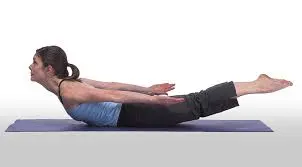
- This exercise is performed by lying face downwards on the ground and using gravity as resistance in the reinforcing process.
- Start with lying face downwards on the ground and put the forehead on a rolled-up hand towel for your comfort.
- Put the arms by the side, and the palms should be downward on the floor.
- Pinch the shoulder blades together and raise the hands off the ground.
- Roll the elbows inwards, palms outwards, and thumbs upwards.
- Slowly raise the forehead around an inch off the towel and the eyes should be looking straight forward at the floor.
- Hold the position for 7 to 10 secs.
- Do 10 repetitions.
To modify the Prone Cobra exercise, you can place a rolled-up towel or small pillow under your forehead for support if you cannot lift your chest off the ground. You can also bend your elbows slightly if you feel any discomfort in your shoulders.
Isometric Neck Exercise
Isometric neck exercises are a type of exercise that involves contracting the muscles without actually moving the joint. This type of exercise is often used to strengthen the neck muscles, including the SCM muscle. To perform an isometric neck exercise for the SCM muscle, follow these steps:
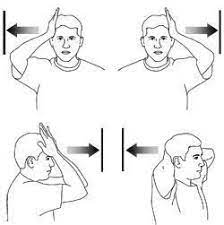
- Maintain the Body straight, and place both hands behind the neck.
- Try applying pressure to the hands with the neck.
- At the same time Resist the neck muscles, both hands maintain aligned position for 4 to 5 seconds and then relax.
- On the first day perform 8 repetitions and on the second day 10 repetitions.
- Do some exercise on the forehead and each side of the neck.
- Do this exercise by pressing on the side of the head.
- Repeat 8 times, then alter sides.
To modify this exercise, you can use a resistance band or towel to provide additional resistance during the contraction. Simply wrap the band or towel around your head and hold onto the ends while performing the exercise.
Prone Rows Exercise
The Prone Rows Exercise for SCM (Sternocleidomastoid) is an exercise that targets the neck muscles. It can help to improve posture, reduce neck pain and tension, and increase strength and flexibility.
To perform the Prone Rows Exercise for SCM, follow these steps:
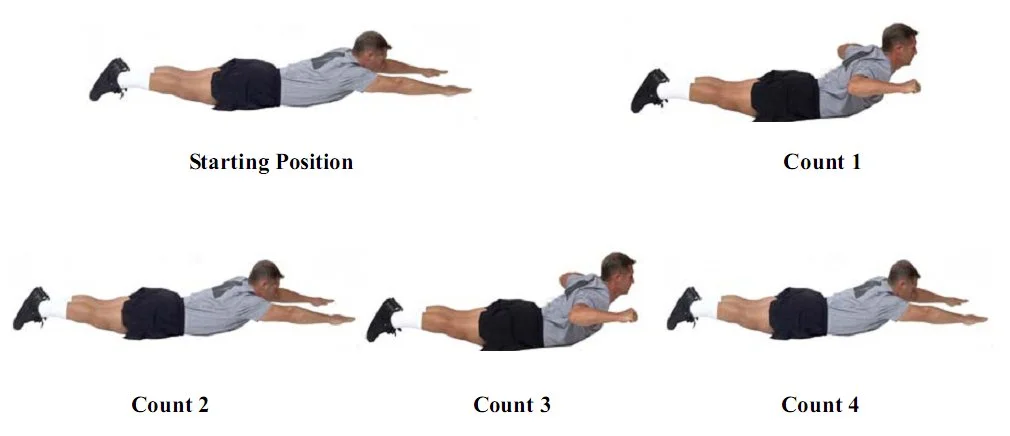
- Start with lying on the stomach with the arms hanging off the side of the bed (try angling the body so the head is facing the corner of the bed).
- Use a pillow under the stomach for comfort. Start by pulling arms back while bending elbows and squeezing shoulder blades together then gradually returning to the initial position.
- Make sure you do not raise the head up while pulling the arms back.
- Do it again 20 times. Perform 2 times a day.
It is important to keep your neck in a neutral position throughout the exercise to avoid straining the muscles. You can also use light weights or resistance bands to increase the intensity of the exercise.
Lateral extension exercise
The Lateral Extension Exercise for SCM (Sternocleidomastoid) is an exercise that targets the side of the neck muscles. It can help to improve neck mobility, reduce tension and pain, and increase strength and flexibility.
To perform the Lateral Extension Exercise for SCM, follow these steps:
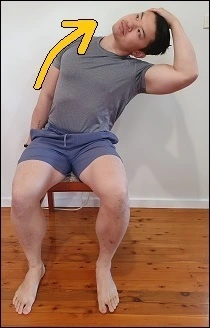
- Initiate by looking straight ahead.
- Gradually tilt the head to the left side.
- Use the left hand to give resistance, and use the muscles in the neck to press against it.
- Maintain for 5 to 10 seconds, then get back to the to the starting position.
- After that, gradually tilt the head to the alternate side.
- Maintain for 5 to 10 secs.
- Get back to the initial position. Perform 10 repetitions.
This is the best exercise to do during working hours, especially if you have to keep your head in a steady position for prolonged periods, as in working at a computer. performed this exercise every half hour in order to prevent neck strain.
It’s important to keep your shoulders relaxed and your spine straight throughout the exercise to avoid straining the muscles. You can also use a towel or resistance band to increase the intensity of the exercise.
Tilted forward flexion exercise
The Tilted Forward Flexion Exercise for SCM (Sternocleidomastoid) is an exercise that targets the front of the neck muscles. It can help to improve neck mobility, reduce tension and pain, and increase strength and flexibility.
To perform the Tilted Forward Flexion Exercise for SCM, follow these steps:
- Slowly tilt the head to the left side.
- With the use of the left hand to create resistance, use the neck muscle to press against it.
- Hold for 5 to 10 seconds, and also get back to the initiate position.
- Also, Gradually tilt the head to the other side.
- Maintain for 5 to 10 seconds.
- Get back to the starting position. Do 10 repetitions.
This is a good exercise to do while working, especially if you have to maintain the head in a steady position for a long time as in working at a computer. Do this exercise every few hours to help with the prevention of neck tightening.
Stretching exercise of the sternocleidomastoid
Sternocleidomastoid stretch 1
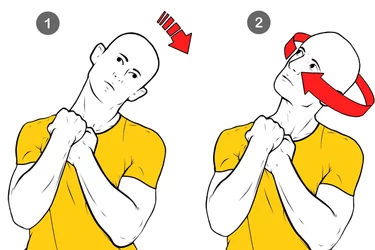
- Start with the Sitting position in front of the table.
- Keep the chin down and in during the stretch.
- Put the right fist on the right side of the chin.
- Put the right elbow onto the front of a table.
- Place the whole weight of the head onto the right fist.
- Now lean the head on the right side.
- Create pressure on the chin in order to improve the stretch.
- The patient can experience a gentle stretch on the left side of the neck.
- Hold the stretch for 30 seconds.
- Perform on the opposite side.
Sternocleidomastoid stretch 2
- To perform this stretch tuck the chin inward and downward.
- Tilt the head to the right side.
- On the left side of the head, place the right hand.
- Give the downward pressure.
- Gradually turn the head towards the left side.
- The patient can experience a gentle stretch in the left Sternocleidomastoid.
- Hold the stretch for 30 seconds.
- Repeat on the left side.
Sternocleidomastoid stretch 3
- How to perform this stretch place the fingers on top of the left collarbone.
- Also, pull the skin down.
- In addition to tucking the chin inward, do so downward.
- After that gradually rotate the head towards the left side.
- Do the leaning of the head towards the right side.
- The patient may experience a stretch on the left Sternocleidomastoid.
- Hold the stretch for 30 seconds.
- Do it again on the right side.
Chair leans
To perform chair lean follow these steps;
- To perform this stretching exercise Start with sitting on the chair.
- Using the left hand take a grip onto the side of a chair.
- The shoulder should be completely relaxed.
- Do the leaning on the bed the body fully towards the right side.
- After that, tuck the chin inward and downward.
- Lean the head towards the right side.
- Place the right hand towards the left side of the head.
- Create the downward pressure.
- The patient may experience a stretch on the left Sternocleidomastoid.
- Hold the stretch for 30 seconds.
- Do it again on the right side.
Neck Elongation Stretch
To perform the Neck Elongation Stretch follow these steps
- Start with tucking the chin inwards and downwards.
- Slowly slide the head towards the right side.
- Stretch out the right side of the neck in an upward direction.
- The ultimate goal is to experience a stretch on the right side of the neck.
- Do it again on the alternate sides.
- Perform 30 repetitions for 3 sets.
Benefits of the sternocleidomastoid muscle
The Sternocleidomastoid (SCM) muscle exercise is beneficial in several ways:
- Relieves tension: The SCM muscle can become tight and tense due to poor posture, stress, or injury. Stretching this muscle regularly can help relieve tension and reduce discomfort in the neck and shoulders.
- Improves range of motion: Tightness in the SCM muscle can limit the range of motion in the neck and shoulders, making it difficult to turn your head or look up and down. Stretching this muscle can improve flexibility and increase your range of motion.
- Reduces headaches: Tension headaches are often caused by tightness in the neck and shoulders. Stretching the SCM muscle can help relieve tension and reduce the frequency and intensity of headaches.
- Improves posture: Poor posture can cause tension in the SCM muscle, leading to discomfort and limited range of motion. By stretching this muscle regularly, you can improve your posture and prevent further strain on the neck and shoulders.
- Enhances athletic performance: Athletes who rely on neck and shoulder movement, such as swimmers or boxers, can benefit from regular SCM muscle stretching. Improving the range of motion and reducing tension can enhance athletic performance and reduce the risk of injury.
FAQ
What is the work of SCM muscle?
The sternocleidomastoid muscle is one of the biggest and most superficial cervical muscles. The main actions of the muscle are rotation of the head to the opposite side and flexion of the neck.
What are the symptoms of weak SCM?
Other symptoms of a condition impacting your SCM muscle involve:
Headache.
Dizziness.
Vertigo.
Nausea.
Eye changes such as droopy eyelids, red or watery eyes, and blurred vision.
Neck stiffness involves trouble tilting or rotating your head.
Which is the best position for stretching the SCM?
Sit or stand with perfect posture. slowly lean your head to one side, and take your ear toward your shoulder. With your opposite hand try to reach over your head and slowly pull your head further into the stretch. Hold for 15-30 seconds and do it again on the other side.
What causes tight SCM muscles?
It can also become tight and shortened from repeated activities just like: bending forward to type. looking downward at your phone. rotating your head a distance from the center while using a computer.
How can sternocleidomastoid pain be treated?
Treatment for sternocleidomastoid pain may include rest, applying heat or ice, gentle stretching and exercises, over-the-counter pain medications, and physical therapy. Medical intervention can be required in severe cases.
References
- Iwinski, D. (2023, August 1). 6 Exercises to Reduce Stress and Strain in Your Neck. IMPACT Physical Therapy. https://www.impactphysicaltherapy.com/6-exercises-to-reduce-stress-and-strain-in-the-neck/
- D. (2023, June 15). 7 Best Sternocleidomastoid (SCM) Stretches. Mind Body Spine | Dr. Stephanie Louie. https://mindbodyspine.ca/best-scm-stretches/
- J. (2022, July 18). Sternocleidomastoid Muscle – Origin, Insertion, Function, Exercise. Samarpan Physiotherapy Clinic. https://samarpanphysioclinic.com/sternocleidomastoid-muscle/#Strengthening_Exercise_for_Sternocleidomastoid_Muscle
- J. (2022, July 18). Sternocleidomastoid Muscle – Origin, Insertion, Function, Exercise. Samarpan Physiotherapy Clinic. https://samarpanphysioclinic.com/sternocleidomastoid-muscle/#Table_SCM_Stretch
- Prajapati, N. (2022, October 29). Sternocleidomastoid muscle stretching exercise Benefit, How to do. Samarpan Physiotherapy Clinic. https://samarpanphysioclinic.com/sternocleidomastoid-muscle-stretching-exercise/#Types_of_Sternocleidomastoid_stretch
- J. (2022, July 18). Sternocleidomastoid Muscle – Origin, Insertion, Function, Exercise. Samarpan Physiotherapy Clinic. https://samarpanphysioclinic.com/sternocleidomastoid-muscle/#Chair_Lean_Stretch
- Image: M. (2021, July 21). The 5 Best Sternocleidomastoid Stretches. Posture Direct. https://www.posturedirect.com/sternocleidomastoid-stretches/
- Image: Prone Row. (2008, September 15). Moccasin Athlete Warrior. https://fscrotc.wordpress.com/exercises/movement-prep-exercises/prone-row/
- Image: Upward Plank Pose – Ekhart Yoga. (2020, November 6). Ekhart Yoga. https://www.ekhartyoga.com/resources/yoga-poses/upward-plank-pose
- Image: Prone Cobra – Muscle & Fitness. (2018, February 16). Muscle & Fitness. https://www.muscleandfitness.com/exercise/workouts/full-body-exercises/prone-cobra/

